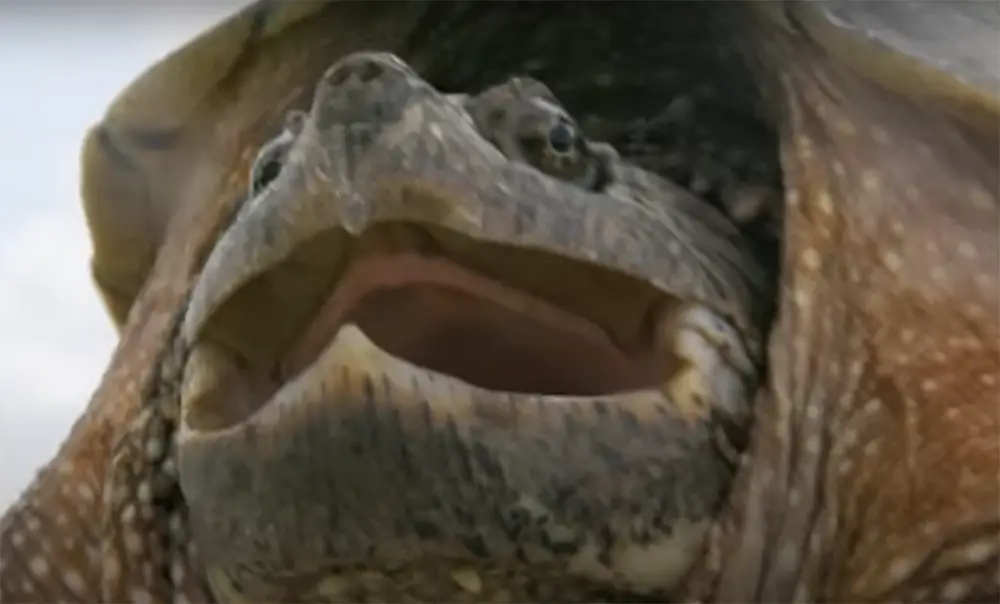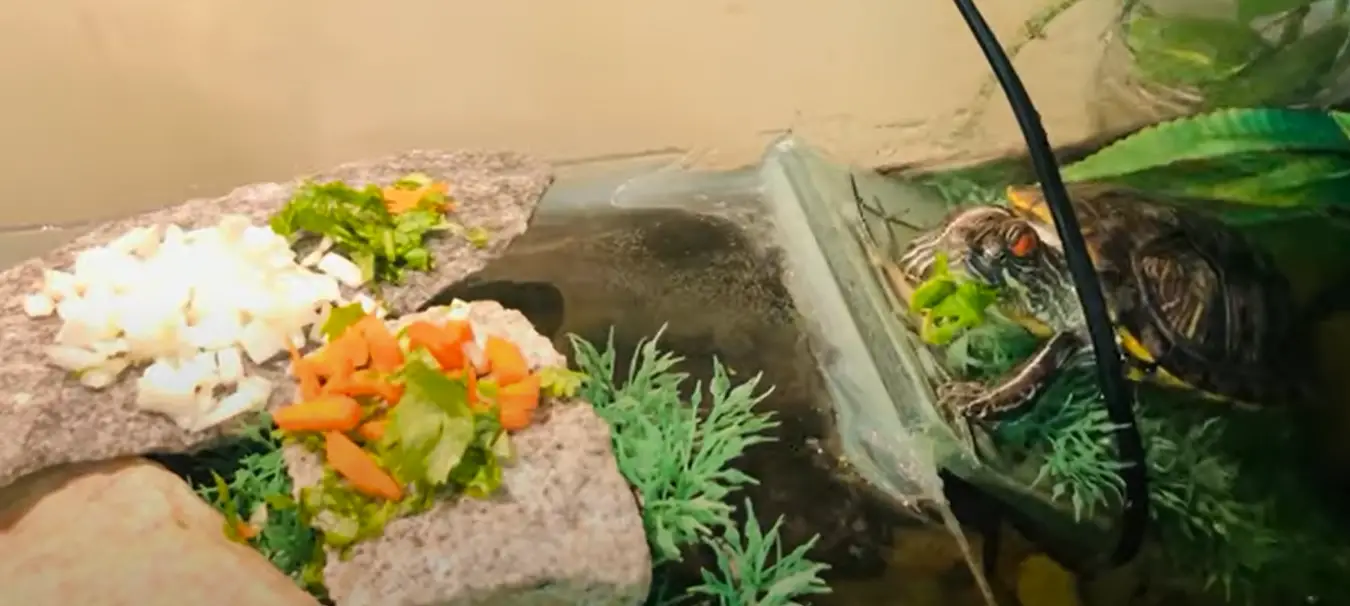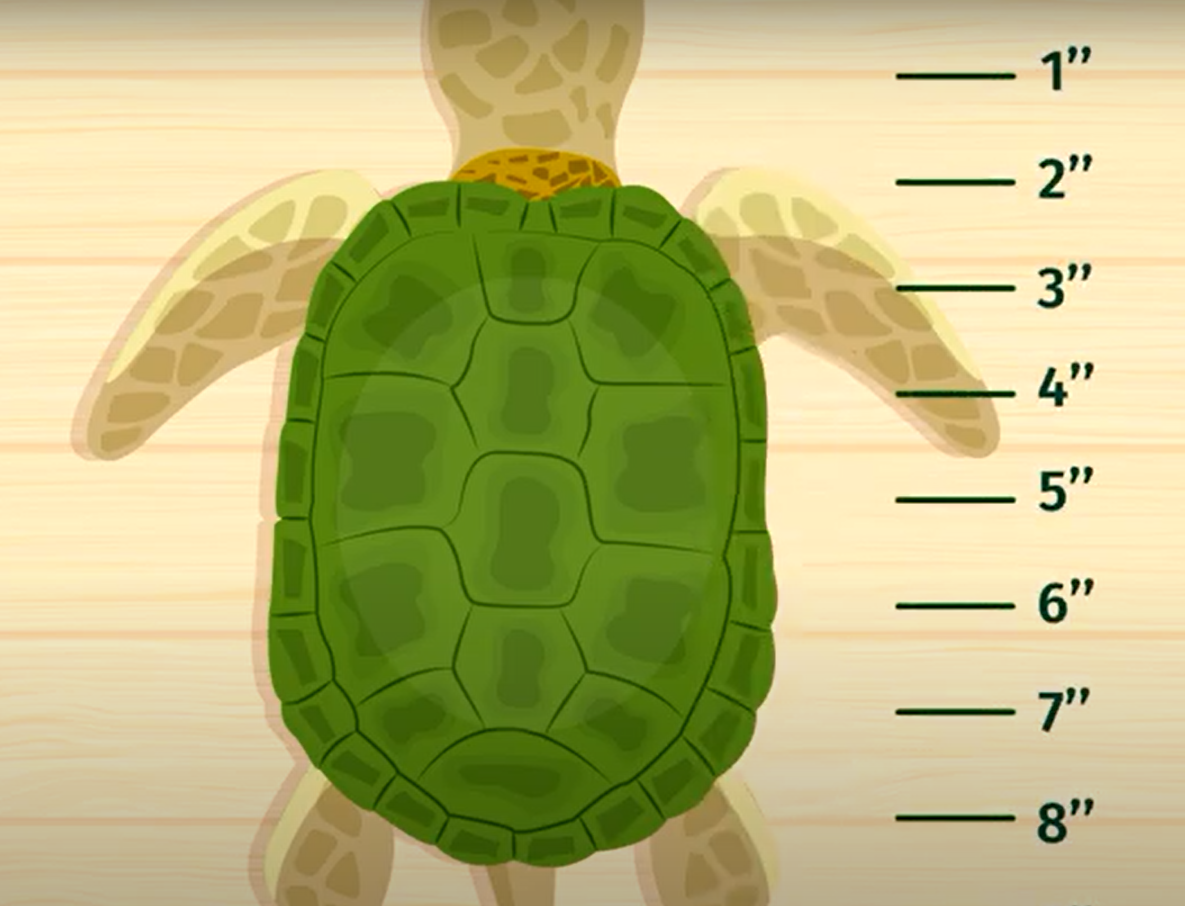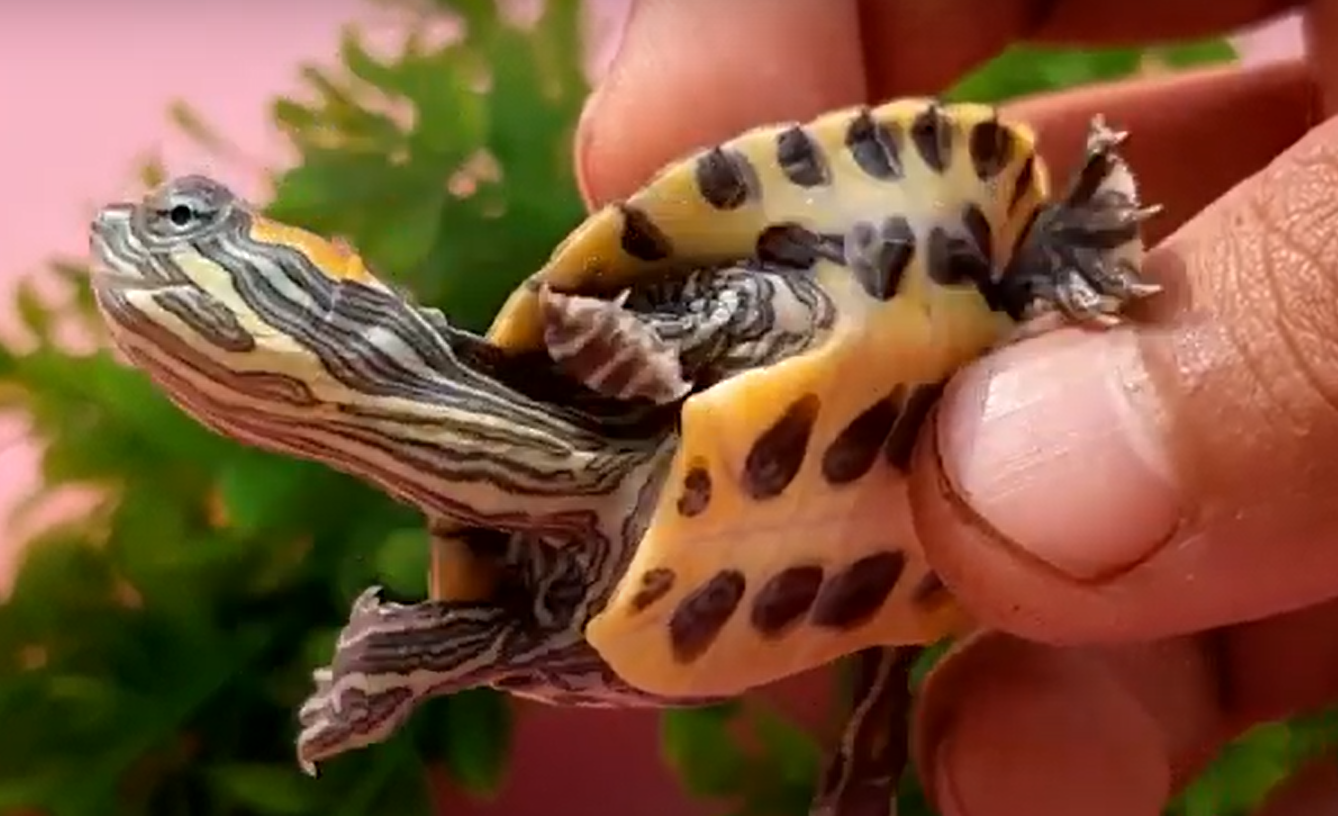Turtles are nice pets that you can enjoy watching swim in their tanks. They are typically not thought of as fast swimmers but they actually do grow very quickly when compared to other pets.
How fast does a turtle grow? The answer may surprise you! For the next few minutes, we will explore this topic. This blog post is perfect for anyone who wants to know more about turtles or who wants to find out how fast they can grow. Keep reading to find out more!
The Growth Cycle of a Turtle
Turtles are flexible reptiles that may dwell both in water and on land. The life cycle of a turtle is the same whether it lives in the desert, the sea, or cold regions; egg stage, hatching, and adult phases. All turtles must pass through these three stages before being labeled adults.
A turtle’s development cycle varies depending on its species and environmental factors [1]:
Egg Stage
Turtles are born as eggs. Some sea turtles lay their eggs in water, but most bury them in the mud or sand. They then deposit their eggs in hundred-egg clutches and allow them to hatch. Some female turtles keep their fertilized eggs with them for a year or more before laying them one by one over time. The adult female provides protection by burying the holes and leaving because they do not stick around to guard the eggs.

Hatching of the Egg
The egg-laying stage of a turtle’s life cycle is the next stage, and it takes about 2-3 months. The parents are not involved in raising the hatchlings. The sex of the turtle is determined by the temperature of the egg during this phase of hatching. When temperatures are high during this time, most female turtles are born, and if temperatures are low, males predominate.
When they are born, baby sea turtles scuttle to safety and eat. Newly hatched sea turtles are in danger of being swooped up and eaten by hovering birds, so they must flee the nest before then! This is why there are so few mature sea turtles despite the fact that up to 80 eggs can be produced at once. Sea turtles may be incubated on land or in water.
Adult Turtle
When you inspect the shell’s health, you can tell if a turtle is growing. A turtle’s entire shell should be complete by the first birthday. The shell of a growing turtle hardens, providing it additional protection. Freshwater and land-based turtles tend to hide inside their shells to avoid predators, but sea turtles’ shells are very tiny when compared with their flickers and heads. A healthy shell is solid to the touch and free of pitting and lumps, whereas an ill one can have growths or lesions, suggesting that your turtle should visit the vet.
Turtles overgrow when they are young but their rate of growth slows down as they become sexually mature. A turtle’s shell grows a ring each year, making it easy to determine a turtle’s age based on its shell. Turtles have fewer predators as they get older and live for hundreds of years.
Turtles spend their first years in the water, and most of them are omnivores during this time. Those on land endure by digging holes in the sand to keep cool or employing their shells as a shield against predators, which helps to avoid dehydration. Turtles can live either in water or on land as they grow. Even if turtles are able to stay submerged for extended periods, they must come up for air at some point. Adult turtles range from 5 inches to over 6 feet long, including the critically endangered bog turtle and leatherback sea turtle. This species reaches a weight of 1400 pounds when fully grown.

How Fast Do Baby Turtles Grow?
Different turtle species have varying growth rates, so smaller species take longer to mature than bigger ones. The maturation periods of turtles are unlikely to remain consistent across a variety of body sizes. Turtles are generally the same size at birth, although there is variation in individual size ranges. The hawksbill sea turtle has an average yearly growth rate of four inches. Red-eared sliders develop at a pace of half-inch each year as juveniles.
Turtles continue to grow gradually throughout their lives, which prevents them from aging as birds and mammals do. Their sluggish metabolism allows them to live in harsh environments without the need for constant food and water if necessary [2].
Growth Rate Of Popular Pet Turtle Species:
1) Red-Eared Sliders
Red-eared sliders reach maturity the quickest during their early years. Within the first year, they may grow to 1.1 to 1.6 inches in length [3].
They usually grow at a rate of 0.25 inches per month, so they would reach maturity in about four years.
Red-eared sliders have the potential to live for around 20 years, but the average lifespan is much shorter – between 6-8 years. This species can weigh up to two pounds upon reaching sexual maturity. Females tend to be larger than males.

If cared for properly, red-eared sliders can achieve a good growth rate; however, owners must provide them with an environment that simulates their natural habitat as closely as possible if they want healthy turtles. Turtles kept in captivity should have access to both water and land areas.
2) Painted Turtles
The growth rate of painted turtles, Chrysemys picta, is fastest when they are young. These turtles have a typical juvenile growth rate of around 12.3 mm each year.
They reach sexual maturity in about four years and can live for up to 40 years.
Painted turtles typically weigh around 175 grams when they reach maturity. Males are usually a little bit smaller than females.
This species is found in the United States and Mexico. They inhabit ponds, marshes, ditches, slow-moving streams, and other wetlands.
In the wild, painted turtles eat insects, crayfish, tadpoles, small fish, aquatic plants, and algae. Painted turtles living in captivity should be fed a diet that consists of commercial turtle food pellets supplemented with fresh vegetables and fruits [such as green beans, zucchini slices, or bits of apple.
3) Snapping Turtles
Snapping turtles are popular as pets. These turtles are big eaters. Common snapping turtles can grow to be 19 inches long and weigh 86 pounds.
The growth rate of a snapping turtle is slow; it takes about 17 years for them to reach full size.

Snapping turtles have an average lifespan of 30-40 years in the wild, but they can live up to 100 years in captivity.
This species is found throughout North America. They are semi-aquatic and prefer habitats with muddy bottoms and submerged logs or branches where they can hide.
They eat mostly aquatic animals such as fish, frogs, crayfish, snakes, small mammals, and birds. In captivity, they should be fed a diet that consists of floating food sticks supplemented with earthworms, fresh vegetables (lettuce, spinach), and fruit melon).
4) Map Turtles
Small map turtles are very tiny reptiles. A typical male is only 4 inches long. Adult females, on the other hand, can reach lengths of 7 to 10 inches.
The growth rate of a small map turtle is about 0.75 inches per year. It takes them about five years to reach maturity.
Map turtles have a lifespan of around 20 years in the wild, but they may live as long as 40 years in captivity.
This species ranges from southeastern Canada, south through most of the eastern United States, and west to central Texas. They inhabit slow-moving streams, ponds, marshes, and other wetland habitats with soft mud bottoms.

They are mostly herbivorous and eat aquatic plants, algae, seeds pods , and fruit. In captivity, they should be given a diet that consists of turtle food pellets supplemented with fresh vegetables (lettuce, spinach) and fruit.
5) Box Turtles
Common box turtles (Terrapene Carolina) develop rapidly as youngsters, just like other turtles.
The slower a box turtle grows, the more mature it becomes. During the early stages (between ages 0 and 5), a typical box turtle will develop at a rate of 10 millimeters each year.
Mature box turtles can weigh from one to four pounds, but most are around two pounds.
Female box turtles usually grow larger than males.
The average lifespan of a wild common box turtle is about 30 years, but they can live up to 50 years in captivity.
This species ranges throughout the eastern United States and southeastern Canada, living in open woodlands, meadows, pastures, and fields.
Box turtles eat mostly insects, larvae, slugs, earthworms, mushrooms, and other fungi. In captivity, they should be given a diet that consists of commercial food pellets supplemented with fresh vegetables (lettuce) and fruit (grapes).
Factors That Affect a Turtle’s Growth Rate:
Healthy Diet

It’s impossible to underestimate the importance of a nutritious diet. If you want your turtle to mature at its normal speed, you must provide it with adequate nutrition [4].
Freshwater Habitat
Turtles that live in freshwater habitats can grow more quickly than turtles living in salt water or brackish environments. This is because freshwater contains higher levels of dissolved minerals and nutrients, which help them to develop faster.
Environmental Conditions
UV, water quality, and quantity, enclosure space, hiding places, basking sites, and temperature are all crucial elements in successful growth.
Genetics
Different species and subspecies mature at varying speeds. Two turtles of the same sex and subspecies that are fed the same diet and kept in comparable conditions can grow at various rates.
How to Tell the Age of a Turtle?
Determining the precise age of a pet turtle purchased from a store or acquired as an adult may be difficult (if not impossible)

There are, however, reliable techniques for determining a turtle’s age. The oldest technique is to count the rings on a turtle’s shell. This method, on the other hand, may not be very reliable because these rings can dull over time. You may get fairly close to determining how old your turtle is if you use this approach in conjunction with additional information.
To utilize this method of ring counting, you must first determine if your turtle is a hard-shelled or soft-shelled species, as soft-shelled turtles do not form these lines.
Examine the scutes or scale-like pieces that make up your turtle’s carapace until you’re sure it’s a hard-shelled turtle. These lines are produced as turtles mature.
It’s also worth noting that, in captivity, turtles kept in a healthy environment with plenty of nutritious food develop faster and produce more than one ring each year.
The color of a turtle’s shell can also be used to determine its age. The shells of Red-Eared Turtles and Reeves Turtles, for example, get darker with time. Another element to consider while determining a turtle’s age is the distinctness or intensity of the lines on younger turtles’ shells. Older turtles’ scutes may appear faint or dissipated as a result of wear and tear, and their shells may look stressed with scratches and pits, despite the fact that they are not chipped off.
How to Make a Turtle Grow Faster: Tips for Owners
Turtles may be kept in captivity. Turtles are usually simple to care for, although their development may be hampered if they are not maintained in suitable conditions.

If your turtle’s growth doesn’t appear to be quick enough, double-check that it is receiving the proper amount of light and water and keep an eye on your turtle’s activity [5]:
- Weigh your turtle and measure it using a ruler or tape measure. Take careful measurements of the turtle’s overall length and breadth, as well as its shell length and width. Weight your turtle. Keep track of both dates so you can keep an eye on your turtle’s development;
- Check the tank size of your turtle. The bare minimum for most turtles is 20 gallons, although all turtles would want as much room as feasible;
- Keep an eye on the tank’s temperature. The tank should be between 75 and 85F in the basking area, with a gradual increase to about 90F in the swimming area. These temperatures are essential for normal body functions, so if they’re not maintained, the turtle’s development may be affected or the animal might become ill;
- Feed your turtle correctly. A turtle’s diet should be adjusted as it grows older; younger turtles require a high-protein diet, but as they become older, they transition to a more vegetarian diet. Young turtles should be fed every day. To make up 25% of the meal, use protein sources such as earthworms and live feeder fish (50%). Plant matter, such as dandelions, carrots, apples, and melons (25%), is used to supplement the remaining 50%;
- Use a good-quality vitamin supplement. Twice a week, sprinkle it over your turtle’s meal. To help your turtle meet its calcium needs, give it a calcium stone or cuttlebone;
- Keep an eye on your turtle for symptoms of sickness. Eyes that are closed or hazy, open-mouth breathing, loose stools, lack of hunger, a swollen face, mucus around the nose and mouth, or lethargy are all indications. As soon as possible, take a sick turtle to a reptile veterinarian;
- Take your turtle’s measurements on a regular basis and keep a record of them. Turtles that are fed correctly should develop rapidly, as long as they are given enough food;
FAQ
1. How big is a 2-year-old turtle?
The length of the carapace is one of the most popular methods for estimating age. The carapace of a newborn turtle will be shorter than your thumb. When the turtle is two years old, its carapace should measure about 4 inches long. The turtle’s carapace should be approximately 6 to 8 inches long by the time it reaches 6 to 8 inches long. As a result, the development of the carapace continues until it reaches around 12 to 13 inches in length [6].
2. How long does it take a baby box turtle to grow?
The diet, enclosure temperature, and hibernation schedule have an influence on the adult shell size and growth rate of box turtles. The turtle’s species and specified living conditions will determine how large it grows from a quarter (coin) to its full adult size in roughly 5-6 years [7].
3. How big can land turtles grow?
More typically known as tortoises, land turtles are the shelled reptiles that reside on land rather than in water. These herbivores consume almost exclusively plants and greens, ranging from 1/2 inch to 6 1/2 feet long [8].
4. How long can a turtle live?
Turtles are known to live longer than other pets, and there’s no secret about it. Some tortoises can live for more than 100 years [9].
5. Do turtles grow according to tank size?
One misconception about turtles is that they can never get larger than their tank. You should expect a turtle to reach its genetic potential as long as it is well-nourished and cared for [10].
Useful Video: Tortoise Daily Care Routine
References:
- https://www.animalshq.com/how-fast-do-baby-turtles-grow/
- https://www.animalshq.com/how-fast-do-baby-turtles-grow/
- https://www.allturtles.com/how-fast-do-turtles-grow/
- https://www.turtleholic.com/how-long-does-it-take-for-a-turtle-to-grow/
- https://www.cuteness.com/article/maintain-singaporean-turtle
- https://theturtlehub.com/how-to-tell-the-age-of-a-turtle/
- https://www.petmd.com/reptile/species/common-box-turtle
- https://animals.mom.com/land-turtles-3456.html
- https://www.thesprucepets.com/how-long-do-turtles-live-4590140
- https://thepetsupplyguy.com/turtle-tank-size-calculator






Leave a Review